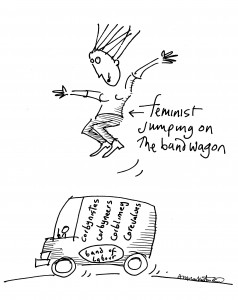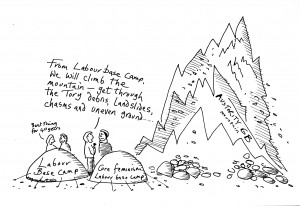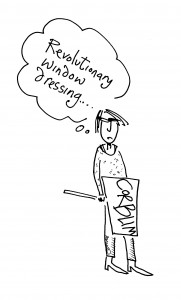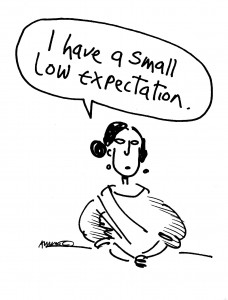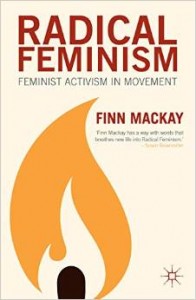T&S choices for the festive season 1
It’s the season for round-ups of the year’s cultural highlights, but instead of giving you our views on the books and films everyone was talking about in 2015, we’ve decided to suggest some you might have missed. In other words, here are a few of the things we’ve enjoyed, and think our readers will too. Not all our recommendations are from this year, but they’re fairly recent and all available, and in our opinion they’re all absorbing and entertaining. So, put some feminism into your festive season with the T&S collective’s Christmas list.
Books worth reading:
Liz Kelly:
My recommendations for holiday reading are two novels written by friends and one which opened up new vistas of sci-fi/fantasy. All of them are available on Kindle and as a real book
Promoted as a thriller, and with a number of glowing reviews, this is a novel written by one of my colleagues. Set in a luxury hotel which is subjected to a terrorist attack the text moves between two central characters who challenge gender stereotypes. Sam, a fearless, yet traumatised, war photographer, is a woman who appears to in control of her life, who has her own ethics and moral compass. Ahbi, the hotel manager and a closeted gay man, angsts about having failed to live up to his military father’s hopes and expectations.
The terrorists and the past are the backdrops against which the Sam and Ahbi enter a conversation with each other and themselves, although they never actually meet. The extreme context creates a situation in which they muse on the personal in the political, the global for the individual. The central section is taught, tense – I found myself holding my breath and had to keep on reading as the writing evoked this small dangerous space.
Written by a long time friend and radical feminist, Golddigger is in the tradition of lesbian historical fiction. The book traces the early life of Frances Moriarty as she escapes the cruel ty of famine hit Ireland for the promise of the US. The scenes in Ireland are full of the stolen moments of a first and forbidden love, the delight and amazement when women fall in love with each other, the simple pleasure of a look, a touch and that first electric kiss. Tragedy strikes and the writing turns to loss and grief, as Frances has to face the challenge and adventure alone. Unsurprisingly she decides to dress as a man and whilst in New York decides to join the legions travelling to California to make their fortune in the gold rush. You have to read the book to find out if she makes it. Ultimately this story is a quest, by a poor but determined woman for a life unconstrained by religion, tradition and feminine conformity, of loving and living against the grain.
The plot line comes straight out of B movie science fiction – aliens land on earth and are not impressed by what they find. What makes this different is that it is set in Lagos, which made me realise how much of the scifi and fantasy I read takes the West as its template. More than this how the aliens are realised, and the uncertainty of whether they might be saviours or tyrants, offers more than a late night movie. This coupled with the machinations of various groupings to use the aliens for their own agendas – a failing sick president, a corrupt pastor, the ambitious military man, and a street gang – make for a complex and at times chaotic plot. What I most enjoyed, however, were the encounters with Nigerian mythology and the chapters which were written from the perspective of a swordfish, a giant spider and even a section of road. Speculative fiction at its best, and part of the new genre of Afrofuturism.
Debbie Cameron:
Sarai Walker’s Dietland takes the upbeat, anarchic political spirit of the early Women’s Liberation Movement and infuses it into a novel with a contemporary setting and pop-culture sensibility. Set in present-day New York City, it’s the story of Plum Kettle, an isolated and initially somewhat downtrodden woman whose job is answering the anguished letters readers send to the editor of a teen girls’ magazine. Plum’s own problem is that she’s fat in a world where fat women are despised: she’s waiting and saving for the bariatric surgery that she thinks will change her life.
But then she stumbles into a parallel world. An anti-beauty industry activist who has infiltrated the magazine where she works leads her to Verena, a philanthropist who inherited a fortune from her mother’s slimming business (the Dietland of the title), and is using what she regards as the proceeds of the devil’s work to do the work of feminism instead. She makes Plum an offer: she’ll pay for the surgery if Plum still wants to have it after a period of living in Verena’s all-female communal household.
Meanwhile, there’s a subplot about a shadowy organization calling itself ‘Jennifer’ (the name has been chosen because it’s so generic, the most popular girls’ name of the 1980s). Jennifer is essentially a terrorist group, and its targets are men who have perpetrated violence against women. It kidnaps them and either kills them or uses them as leverage to make feminist demands (such as the removal of degrading images of women from public sale).
I won’t reveal how it all comes out, but the reason I think it’s a great radical feminist read is not, in any case, the plot. It’s the mixture of what you might call political satire and fantasy. Walker is both incisive and uncompromising in her critique of the misogyny of contemporary ‘post-feminist’ societies. There is almost no aspect of the contempt, violence and hatred women are subjected to—by capitalism, by their own internalized self-loathing, and above all by men—that isn’t touched on at some point in the novel. Yet it doesn’t turn into a horrorfest or a one-note rant; first, because the satire is often funny as well as enraging, and second, because of the fantasy element. The ‘Jennifer’ subplot has women rising up and turning the tables on their oppressors: we might not approve of their methods in real life, but in fiction this revenge is sweet.
In a way Dietland is a (feminist) novel of ideas, but it’s unlikely to be described as such, because it isn’t a ‘difficult’ or inaccessible book, and it’s not aimed at readers who like their writing self-consciously literary. Some reviewers have been a bit sniffy about it for that reason; a few have gone so far as to compare it to chick-lit. Some readers clearly made that assumption too, to judge from their online comments expressing disappointment that the initially sympathetic Plum turned out so ‘unlikeable’.
I’m more in agreement with the reviewer who described Dietland as ‘a thrilling, incendiary manifesto disguised as a beach read’. And what you can enjoy on a beach, you can equally enjoy during the inevitable longueurs of the festive season, or use to lighten the gloom of a British January. Think of it as a feminist alternative to joining the gym and going on a detox diet.
Films worth watching
Joan Scanlon:
My recommendations begin with two films that are more about pleasure than politics, the first an elegiac film about women and wine-making, and the second a romantic comedy with a twist.
Les Cabotines: le vin au feminin
Les Cabotines: le vin au feminin (freely translated as: Wine, Women & Friends, which is the English title of the film) was produced and directed by Fiona Cunningham-Reid. It is the story of Carole Leblanc and Jo Béfort, who started their wine adventure eight years ago in Collias, France. Their dream was to produce excellent wine. They had no experience, no professional support, just their passion for wine – and the support of their friends. This captivating film follows their wine-making adventure and gently explores their relationships with the village and each other. This is not a lesbian separatist community; far from it. Key to the success of their integration in the village is their absolute determination to make the best possible wine, and vice versa. The villager from whom they hire their cellar is thoroughly approving of the quality of their wine, which far exceeds that of the previous occupant. When asked about their sexuality, he says: “It was talked about, but there’s no problem.” Their sexuality is neither here nor there, but a remarkable unremarkability nonetheless in the context of village life.
The film was screened at Channel 4 on 23rd January 2013 at the launch of Stonewall’s female supporter initiative, followed by a wine tasting of Carole & Jo’s latest vintage. Long lingering shots of the Pays du Gard landscape, Jo mucking out a wine press, Carole lyricizing about the quality of the grapes, warm evenings eating outdoors with quantities of friends celebrating (and consuming) the fruits of their labour. The film is not coy about the physically arduous work involved in wine-making, but in spite of this, I doubt there were many lesbians in the audience (materially influenced by a glass or two of the very fine Les Dames d’Epicure), who didn’t consider packing up shop and moving to Languedoc-Roussillon. A recent review in G3 magazine (mostly very positive to be fair), nonetheless argues that: ‘the documentary is at times almost sickly sweet and idyllic beyond belief’, and I can’t help wondering if this isn’t a warning to the readers of G3, Diva et al, that this film isn’t about power, danger and sex – it’s purely a film about pleasure.
To buy or download the film: http://lescabotinesfilm.com/ or you can simply order a copy of the DVD from Amazon (under the English title). Sadly, their wine is not available in the UK, but it would scarcely be a hardship to visit the vineyard and buy it for yourself: http://domainelescabotines.fr/
Margarita
Margarita – a film by Dominique Cardona & Laurie Colbert – was screened on the closing night of the London Lesbian & Gay film festival, 24th March 2013. Ostensibly a lesbian love story, here, as in Les Cabotines, sexuality is not the issue. Margarita, a young Mexican nanny, has been living and working in Canada illegally for the previous six years. She is employed by Gail and Ben, a cash-strapped power couple (brilliantly acted by Patrick McKenna and Gail Lautier), who are oblivious to her dependence on them – and theirs on her: she does everything in the house, from cleaning and cooking to building maintenance (there’s a very funny scene where she appears as a kind of superwoman with a tool belt strapped to her ready for any DIY task).
When the couple decide they have to make economies, Margarita’s tiny salary is on their hit list, although they struggle to inform her of this, and their teenage daughter Mali goes into full rebellion when she finds out. The film is wonderfully ironic – Margarita is self-consciously portrayed by Nicola Correia-Damude as a Mexican Mary Poppins (the reference is explicit). Everyone loves her (not just the family, but Carlos the gardener, the shopkeepers – and, of course, her commitment-phobic lover Jane). When Margarita is knocked off her bicycle, and thus brought to the attention of the authorities and threatened with deportation, Ben and Gail realise they can’t manage without her, and, since they are not married themselves (on principle) each of them in turn propose marriage to her in order to keep her in the country (and of course managing their household). These scenes are hilariously funny – the heterosexual couple convinced that each of them is making an irresistible offer.
Margarita (à la Poppins) is of course only interested in marrying for love, and the film ends with Jane (finally) proposing. Do we have a Jane Austen conclusion: all the social divisions, turmoil and personal tragedies, neatly resolved by matrimony? I may be attributing too much satire to the film, but it was so consistently self-ironising that I was inclined to read the conclusion in that light too. We suspect that the rather shallow Jane is probably commitment-phobic at least in part because of Margarita’s class and race, and I for one did not feel the lesbian marriage conclusion was the end of her struggles. In the end, the film was more a feminist film than a lesbian feel-good movie. It is not a coming out story; Margarita just happens to be a lesbian (and this is simply accepted by all the other characters in the film). Her sexuality is not the focus: the film is more concerned with issues of social justice (class, race and immigration policy) and with parenting, heterosexuality, marriage. However, it deals with all these issues with a light touch, and was that rare thing: a beautifully crafted, surprisingly funny, thought-provoking film, which I can recommend whole-heartedly.
Lesbiana
If you want stir some history and politics into your festive viewing, then you can now get hold of a copy of Myriam Fougère’s Lesbiana: A Parallel Revolution. This documentary about lesbian separatist communities in North America in the 1980s was screened on the opening night of the first London Feminist Film Festival on 30th November 2012. It is now available on DVD from the following website: http://www.lesbiana-film.com
Shortly after the screening, the Trouble & Strife collective mulled over the history and significance of lesbian separatism, and you can hear this discussion on our podcast, downloadable via this link.



